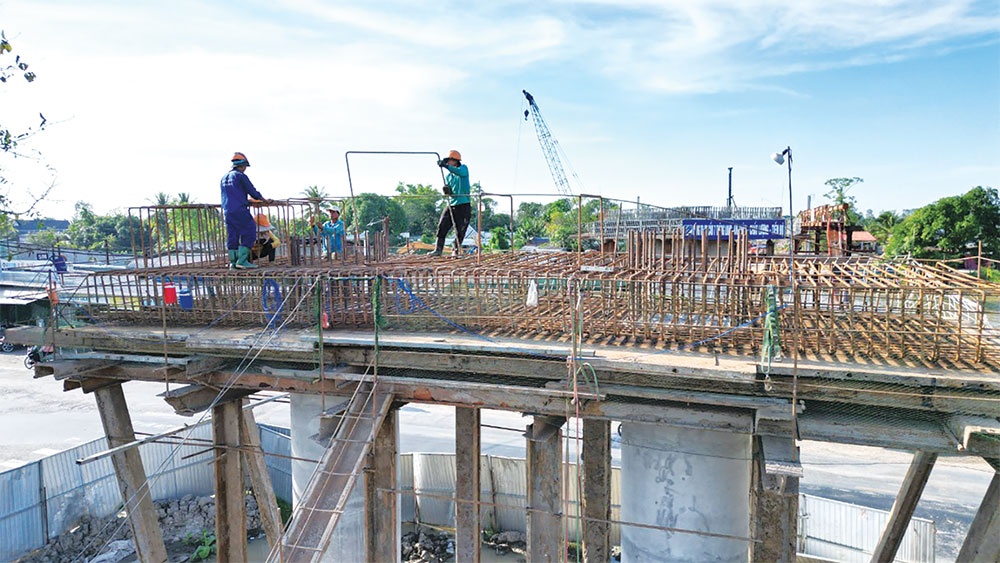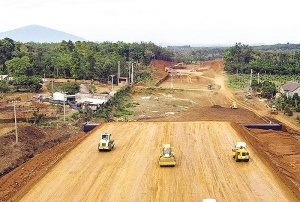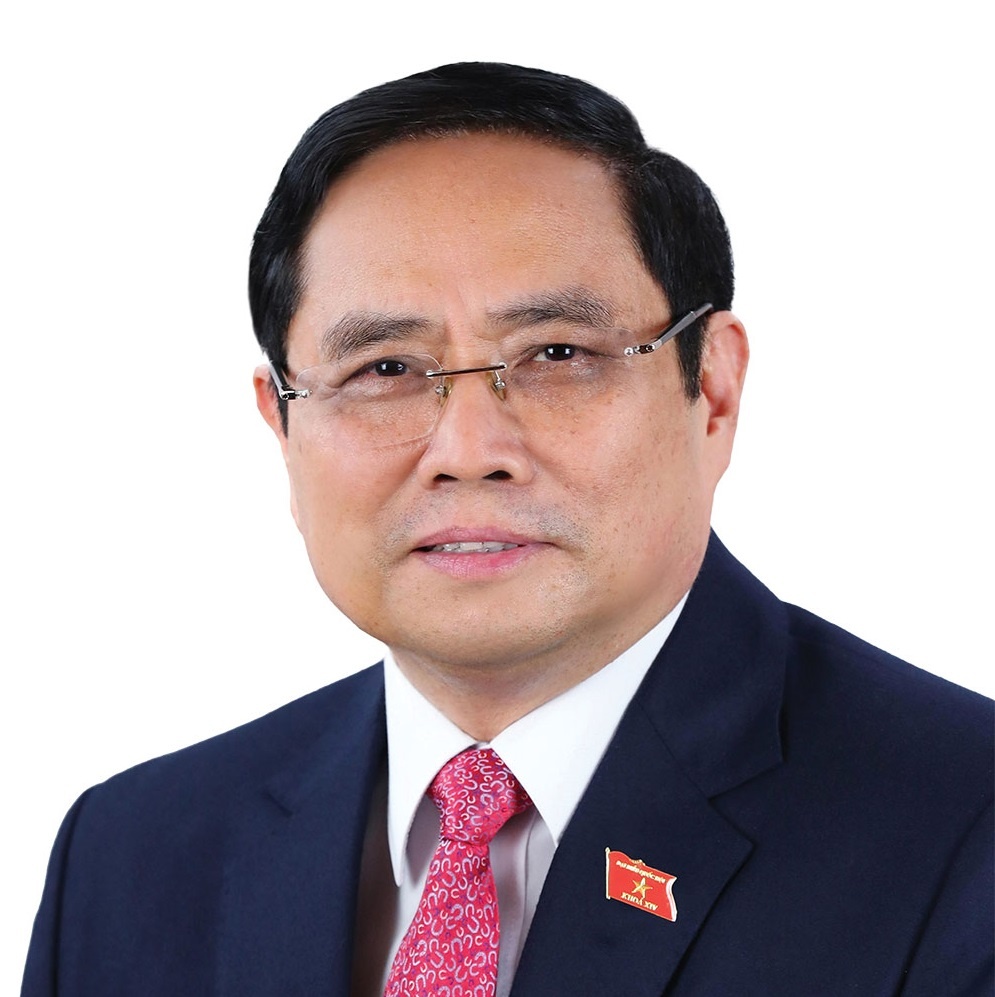Localities chastised for lethargic public spending
 |
| In order to accelerate disbursement, a resolution is expected to give more rights to local authorities in terms of project barriers, photo Le Toan |
Numerous ministries, agencies, and localities were named and shamed by Prime Minister Pham Minh Chinh at last week’s national conference on accelerating public investment in 2023 due to the weak disbursement of public investment in 2022. The PM reiterated the responsibilities of the leaders involved at all levels.
Chairman of Ho Chi Minh City People’s Committee Phan Van Mai pointed out several reasons why the city’s public investment spending only stood at 71 per cent of the allocation in 2022 ($1.6 billion in total).
“They show poor performance in implementing project procedures, especially using official development assistance (ODA), construction procedures, capital allocation, land clearance, and material prices increase. But the most important aspect is about the responsibility of investors in preparing documents, assessing problems, and proactively removing difficulties,” Mai said.
Chairman of Gia Lai People’s Committee Truong Hai Long said that in 2022, the province disbursed 76.3 per cent of its allocation ($143.5 million), lower than the average national rate. This was chiefly due to poor project preparation, leading many localities to receive government criticism for their slow spending.
“Some projects struggle with planning adjustments, and the ground clearance for works was not completely resolved, leading to slow disbursement and construction progress,” said Long.
| Pham Minh Chinh, Prime Minister
The disbursement rate of public investment in 2022 was not as strong as in 2021, and seven ministries and central agencies reported a disbursement rate of less than 50 per cent. Numerous ministries and central and local agencies did not fully allocate the public investment capital plan in 2022 with a total amount of over $1.24 billion. I criticised these ministries, agencies, and localities, and asked them to seriously analyse the causes, review responsibilities, and drastically implement solutions to improve the situation. There are some problems in institutions, mechanisms, and policies that have not been adjusted to suit practical requirements. Some projects suffered a sharp increase in input material prices, a shortage of raw material supply, and delays in compensation, site clearance, and resettlement. There is not enough determination by local governments and the heads of ministries and agencies to remove obstacles. The capacity of numerous project management boards and contractors is still poor, law observance and implementing discipline in public investment is not good enough, and the coordination among them is too weak. In the Programme for Socioeconomic Recovery and Development (PSRD), the implementation of the 2 per cent lending rate support package reported a poor performance, reaching only 0.3 per cent of the target. There is $121.7 million remaining in supporting rent for employees, so we need specific solutions. Unlocking all resources, accelerating public investment, and implementing the PSRD and three national target programmes will play an important role in various aspects. These include contributing to removing bottlenecks in transport infrastructure, education, culture, health, and society; ensuring national defence; creating jobs; and motivating business. Public investment is a driving force and resource for development. We have saved money for this capital, so public investment must be spent effectively without corruption or waste. Disbursing public investment is the most important political task of all levels and sectors in 2023, so they should organise and carry out creatively based on their functions. |
Biggest bottlenecks
Tran Sy Thanh, Chairman of Hanoi’s People’s Committee, highlighted the role of decentralisation to speed up the disbursement of public investment allocated to the major cities and provinces.
“The disbursement of Hanoi in 2022 was lower than the country’s average rate at 87.8 per cent of the total $2.22 billion. In order to accelerate the disbursement, we expect the PM to issue a resolution to give more rights to local government,” said Thanh. “There are a lot of procedures for the implementation of a project, and if we face some bottlenecks in some aspects like land and environmental, these projects will be delayed for few months.”
Site clearance is one of the biggest bottlenecks pointed out by localities. Nguyen Van Tho, Chairman of the People’s Committee of the southern province of Ba Ria-Vung Tau, oversaw the disbursal of 147 per cent of the plan last year. He said that it was key that provincial leaders listened to problems every week to solve them together.
“I vow to try and remove obstacles within 10 days,” Tho said. “The biggest trouble of most projects is ground clearance, so we tried to shorten or cut unnecessary procedures, getting ready for land resettlement. People whose land was recovered have a place to live as soon as possible.”
Acting Chairman of Quang Ninh People’s Committee Cao Tuong Huy said that, in addition to setting up special working groups on public investment, the province would boost restructuring of funds and prioritise some major projects. “In 2023, we started only seven new projects,” said Huy.
Ba Ria-Vung Tau and Quang Ninh are among two of eight ministries and 30 localities with a fully complete disbursement rate as assigned in 2022.
General disbursement did achieve some positive results. For fiscal year 2022 (as of the end of January 2023), the figure reached over $23.5 billion, equivalent to nearly 93.5 per cent of the plan. Despite being worse than the rate in 2021, at 95.1 per cent, the amount of disbursement in 2022 was the highest ever, an increase of about 23.5 per cent or $4.48 billion compared to 2021.
Rising progress
Contributing to this result, last year the government issued several resolutions and organised conferences and working groups, led by four deputy prime ministers and others, to inspect and urge disbursement.
Working groups have examined, assessed, and removed difficulties for ministries and local agencies with low disbursement rates, as well as proposed to amend and supplement related policies.
Accordingly, the progress of numerous important national infrastructure projects and regional highways have been accelerated, including 310km of highways put into operation with full infrastructure and equipment; 255km basically opened to traffic; 12 component projects of the eastern portion of the North-South Expressway; and many other major projects.
Explaining the poor performance of some ministries, agencies, and localities, Deputy Minister of Planning and Investment Tran Quoc Phuong pointed out two groups of obstacles related to disbursement. The first was related to planning, which has already been updated and improved.
“When the PM announces a directive on formulating an annual plan and a notice of public investment capital inspection, ministries and agencies build their own plans and submit them only once. After submitting it to the National Assembly and being approved, the PM assigns it once,” the deputy minister said.
The second is related to project procedures. He highlighted that the Law on Public Investment had already radically decentralised. “All local projects are approved by the local government. For ODA projects, only top-tier projects must be submitted to the central level, while B and C-level ventures are devolved to local government,” he said.
The Ministry of Planning and Investment requests a high disbursement rate of public investment capital and the right quality and efficiency of works and projects. If there is no suitable solution from the outset, the disbursement of public investment capital will be slow. The longer public investment takes, the more wasteful it will be, and efficiency will decrease. Based on a solid performance in 2022, the government has set the goal to disburse at least 95 per cent of the total of more than $30.94 billion this year, an increase of over $5.65 billion on 2022.
 | Solutions outlined to speed up public spending Completing plans for public spending on investment has proved difficult due to several adverse factors in construction, such as volatility, choppy gasoline prices, difficulties for contractors to access credit capital, unfavourable weather in many key projects, and unusual amounts of rain. |
What the stars mean:
★ Poor ★ ★ Promising ★★★ Good ★★★★ Very good ★★★★★ Exceptional
Related Contents
Latest News
More News
- EVN launches major power infrastructure projects nationwide (December 19, 2025 | 18:17)
- VAL inaugurates second production line to meet domestic animal feed demand (December 19, 2025 | 16:37)
- Sun Group pioneers urban tram system in Phu Quoc (December 19, 2025 | 15:00)
- Seven major projects launched to drive Hanoi’s next growth phase (December 19, 2025 | 14:00)
- Securing capital and efficiency for Vietnam’s 2026-2030 growth ambitions (December 17, 2025 | 10:00)
- Vietnam bucking trend in the global M&A landscape (December 16, 2025 | 14:20)
- HDS Summit spotlights Vietnam’s rising role in regional supply chains (December 16, 2025 | 08:00)
- Kolon signs $48 million airbag supply deal with Autoliv (December 15, 2025 | 18:14)
- National Assembly approves Vinh–Thanh Thuy expressway project (December 15, 2025 | 18:02)
- Quang Tri green-lights $1.59 billion LNG-fired power project (December 15, 2025 | 17:59)


 Tag:
Tag:






















 Mobile Version
Mobile Version